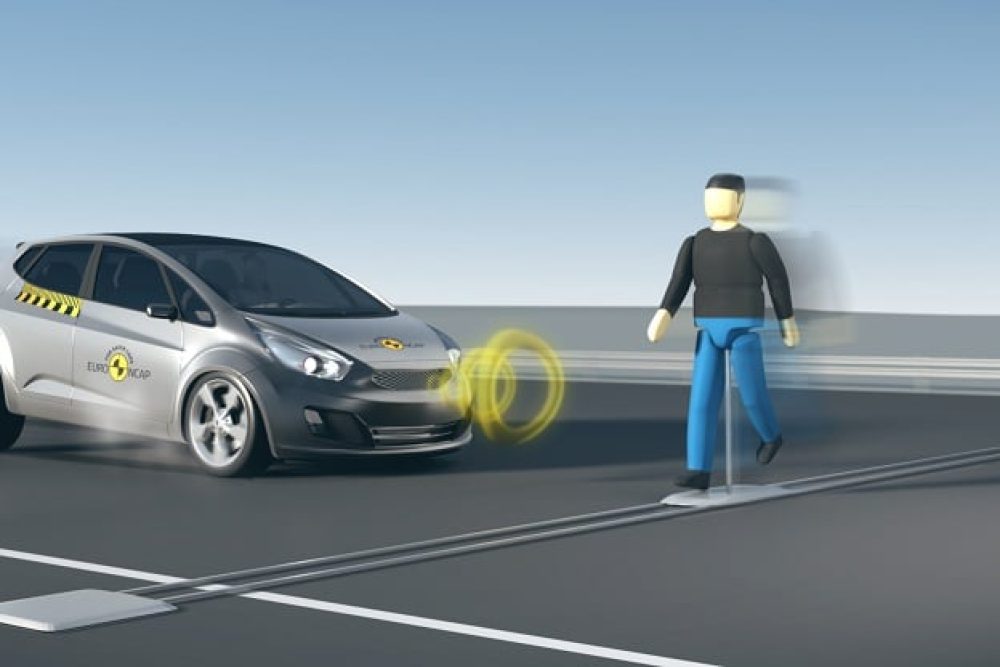Saving the pedestrian
- Most pedestrian collisions occur when drivers fail to brake, brake too late or brake too gently – often because the driver is distracted or because the pedestrian crosses unexpectedly;
- Autonomous Emergency Braking (AEB) functions use lasers, radar and/or cameras to detect the imminent collision, perform an effective emergency stop or reduce the impact speed significantly;
- Euro NCAP will test vehicles’ response to pedestrians in simulations of the three most common urban scenarios: adults walking and running into the vehicle’s path and a child stepping out from behind a parked car.
EUROPEAN safety organisation Euro NCAP is introducing a new test that will check how well vehicles autonomously detect and prevent collisions with pedestrians.
With new vehicles offering more autonomous driver assist systems, Euro NCAP’s Autonomous Emergency Braking (AEB) Pedestrian tests will make it simpler for consumers and manufacturers to find out which pedestrians’ life-savers systems work best.
Euro NCAP secretary general Dr Michiel van Ratingen said: “These new tests are the first in the world to assess highly automated vehicle features and driver assistance systems from the pedestrian’s perspective.
“Many new cars now offer some form of AEB system that can help prevent car-to-car collisions, but only some are also able to detect pedestrians. By checking the results on Euro NCAP’s website, consumers will be able to verify manufacturers’ safety claims and choose the right AEB option.”
Improved protection for drivers and passengers has helped lower Europe’s road death toll significantly over the past 20 years. Europe now needs new car technologies to address the number of pedestrians, cyclists and motorcyclists killed and injured on its roads every year.
In 2014 these vulnerable road users accounted for almost half (47%) of Europe’s 26,000 road deaths. For every death, there are an estimated four permanently disabling injuries, such as damage to the brain or spinal cord, and eight serious injuries.
Independent analysis of real world crash data in the UK and Germany indicates that the fitment of effective autonomous emergency braking systems on passenger cars could prevent one in five fatal pedestrian collisions.
Most pedestrian collisions occur when drivers fail to brake, brake too late or brake too gently – often because the driver is distracted or because the pedestrian crosses unexpectedly.
Autonomous Emergency Braking (AEB) functions use lasers, radar and/or cameras to detect the imminent collision, perform an effective emergency stop or reduce the impact speed significantly.
Euro NCAP will test vehicles’ response to pedestrians in simulations of the three most common urban scenarios: adults walking and running into the vehicle’s path and a child stepping out from behind a parked car.
To earn a good score in the test, vehicles should be able to prevent collisions with specially developed pedestrian dummies at speeds of up to 25mph. At more challenging speeds of 25-37mph, the tests aim to reduce the collision speed to less than 25mph, making the impact more survivable.
So who will use the test results? See the next page:







